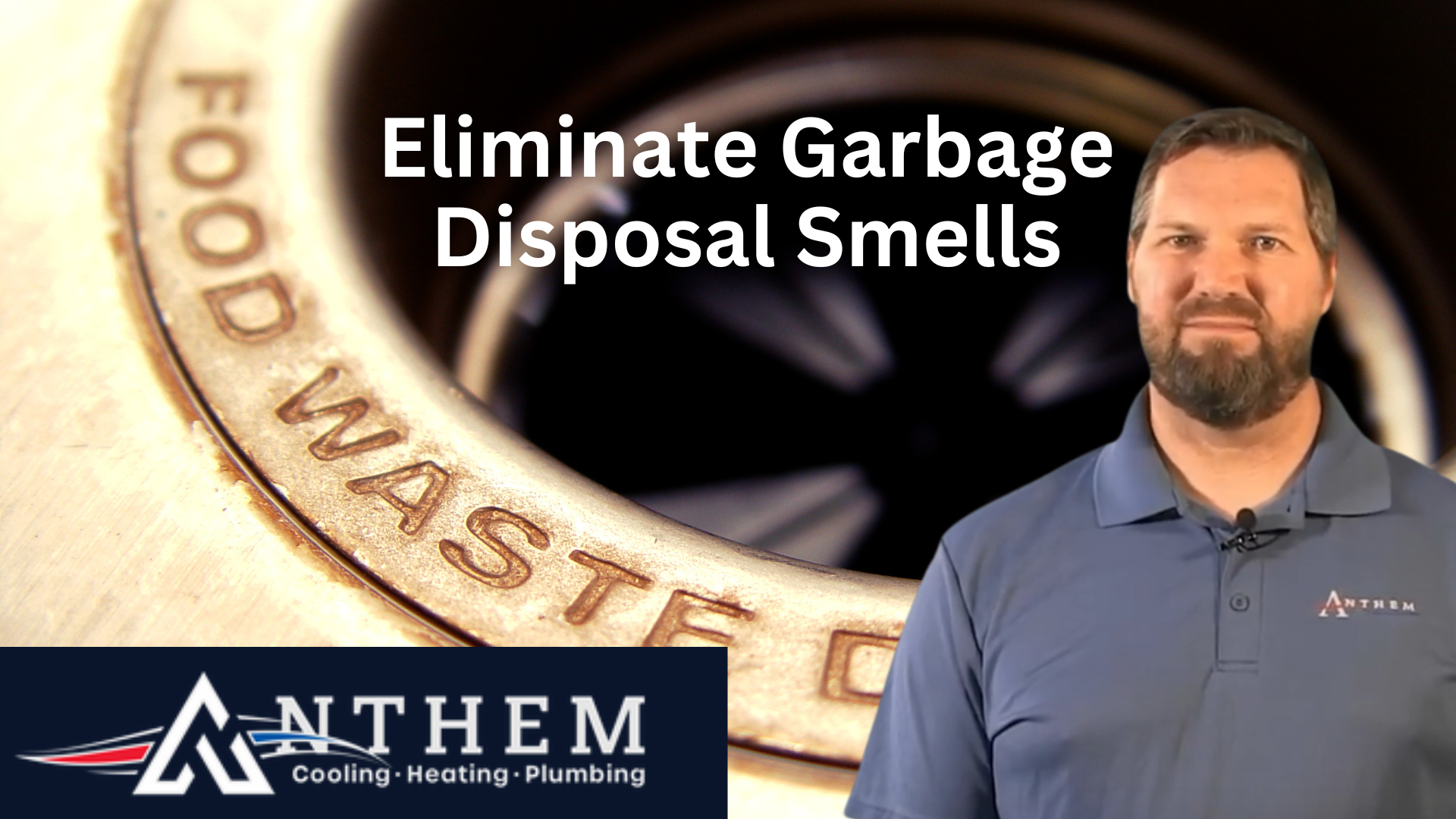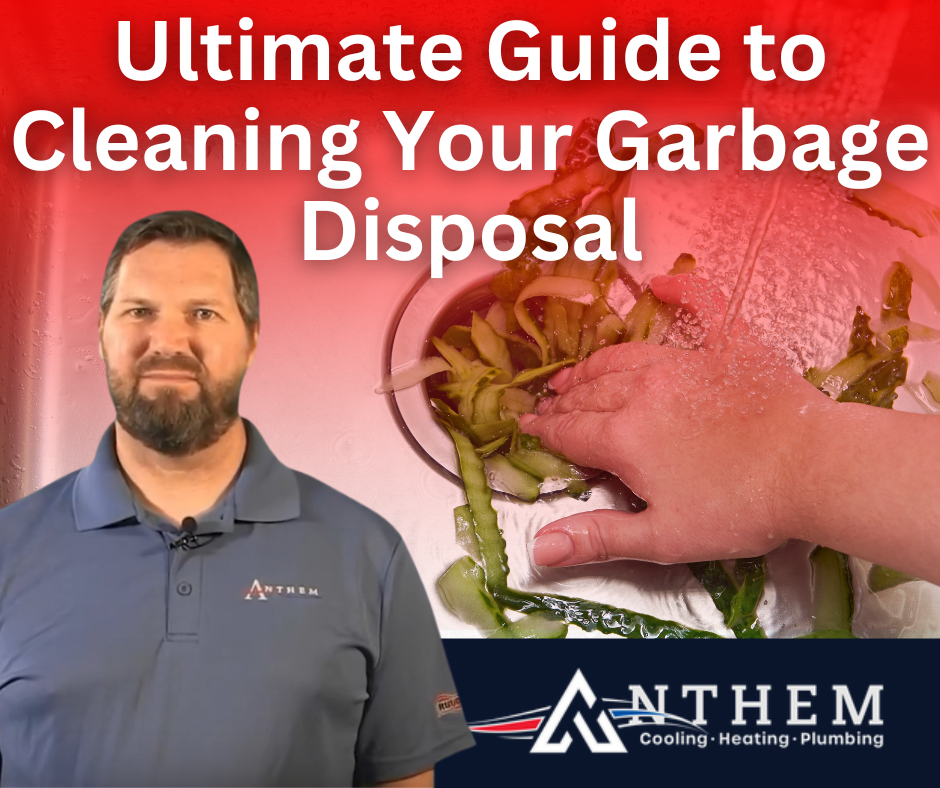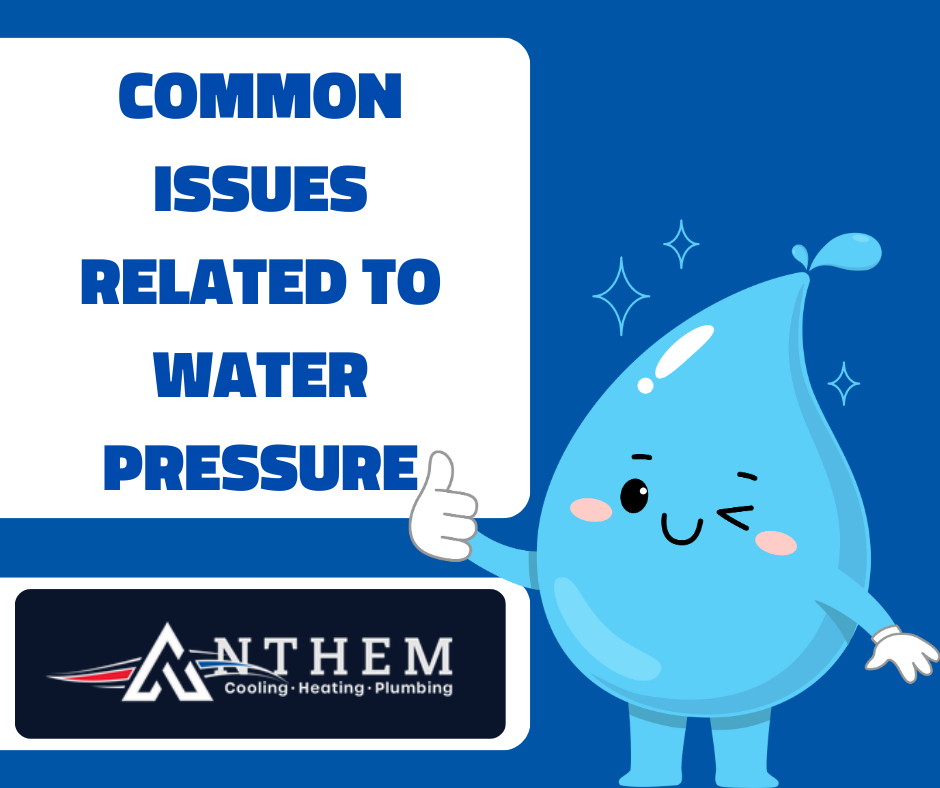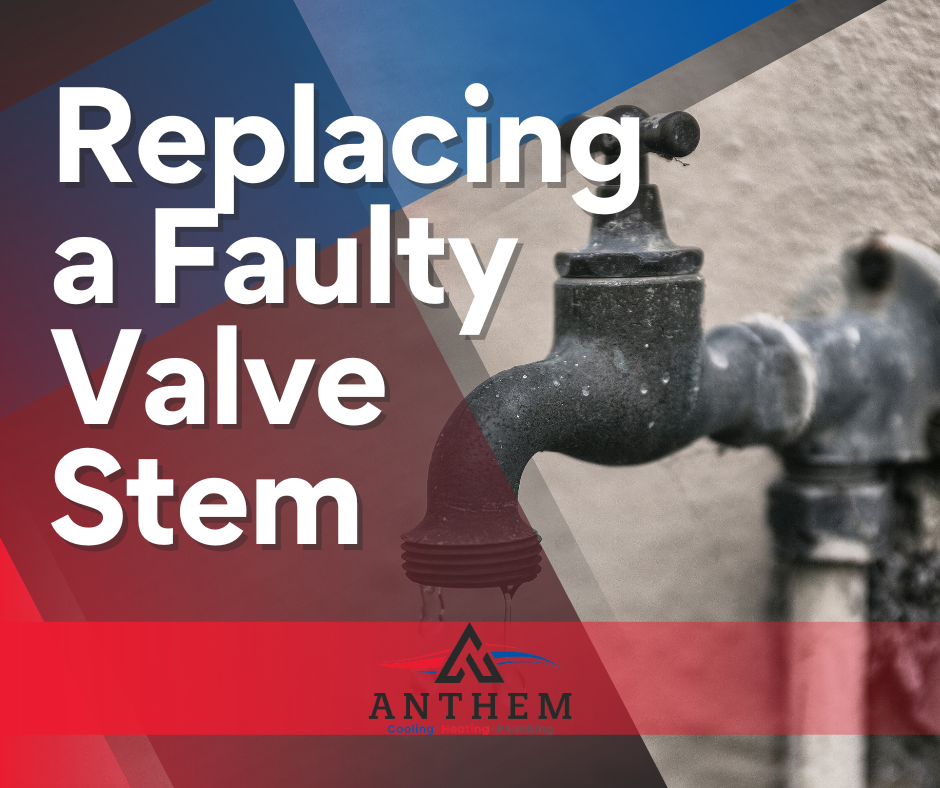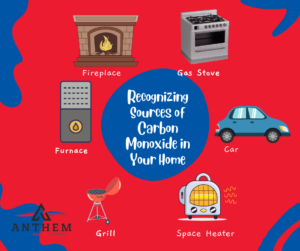Strolling around your home, you might spot water trickling from your outdoor air conditioning unit. Seeing an AC leaking water outside isn’t just a sign to break out the mop; it’s a nudge that something could be amiss with your cooling companion.
You’re in luck because understanding and tackling this issue is about to get easier. You’ll dive into the typical culprits like blocked drains or damaged drip pans, and why sometimes those chilly coils decide to freeze over and turn against you.
In these lines, we unpack not only the “hows” but also shine a light on preventing such leaks through smart maintenance moves – all without fluff. Get ready for insights that will keep both you and your AC unit cool as summer rolls in.
Experience Year-Round Comfort with Anthem’s Comfort Club!
Are you looking to ensure your home’s HVAC system runs smoothly year-round without breaking the bank? Look no further! Join Anthem’s exclusive Comfort Club today for just .95 a month!
Table Of Contents:
- Decoding the Causes of AC Leaking
- Signs Your Air Conditioner May Be Leaking Refrigerant
- Maintenance Tips to Prevent AC Water Leakage
- When to Call a Professional for Your Leaking AC Unit
- Installation Errors That Can Lead to AC Leaks
- Conclusion
Decoding the Causes of AC Leaking
When you notice your air conditioner leaking water, it’s like finding out your trusty car has a flat tire—it’s frustrating and can stop you in your tracks. But before you call for help or grab tools, understanding what’s behind those pesky leaks is key.
Identifying Blockages in Your AC’s Drain Line
Air conditioners chill our lives, but they also pull moisture from the air—think of it as sweating on a hot day. This moisture drips into a condensate pan and then flows away through the drain line. Sometimes this drain gets blocked with dirt or debris, leading to an annoying puddle where there shouldn’t be one.
To get things flowing smoothly again, check if the blockage is visible at the end of the condensate drain pipe outside. If not, peek inside near where it connects to your cooling unit; sometimes, that’s where trouble hides.
The Troubles with a Damaged Drip Pan
Your AC unit’s drip pan catches all that sweat we talked about earlier—but when it’s cracked or clogged up tighter than rush-hour traffic, water overflows instead of draining away properly. Take a look under your indoor unit: see any signs of rust or damage? That could mean game over for keeping things dry without some repair work.
If you spot small amounts of water coming from underneath regularly during summer months—or anytime really—it might just be time to replace that worn-out pan.
Frozen Coils – A Slippery Slope to Leakage
Sometimes coils ice up faster than an igloo in winter because something ain’t right—and frozen evaporator coils are often culprits behind why units leak water indoors. When airflow through dirty air filters gets reduced enough (imagine trying to breathe with a pillow smothering you), these important parts get too cold and freeze over even while working overtime during hotter days.
An easy fix here is changing out those dirty filters more often so everything stays cool but doesn’t turn icy. And don’t forget: low refrigerant levels may also cause freezing since they throw off pressure balance within your system—just another reason why keeping tabs on coolant should never fall by the wayside.
We’ve all heard “an ounce of prevention is worth a pound cure,” right? Well, consider regular maintenance checks by pros as that ounce preventing major headaches down the road. They’ll catch potential issues like broken condensate pumps before dripping becomes a full-blown flooding disaster area. So remember—if life gives you lemons (or leaks), make lemonade by getting ahead of problems fast. That way, your socks—and your sanity—stay dry.
Key Takeaway:
When your AC leaks, think detective work first. Check the drain line for blockages and inspect the drip pan for cracks or rust—these are common culprits. Don’t ignore changing air filters; it prevents coils from freezing up. Stay cool and dry with regular maintenance to nip potential disasters in the bud.
Signs Your Air Conditioner May Be Leaking Refrigerant

Spotting the difference between an air conditioner leak and a refrigerant leak is key to maintaining a cool, comfortable home during those sweltering summer months. When you notice water around your outdoor air conditioning unit, it’s often just that—water. This liquid puddling is usually due to condensation from the cooling process.
Water vs. Refrigerant: Understanding What’s Puddling
Sometimes what seems like a harmless pool of water could signal something more serious, such as a refrigerant leak. A large puddle indicates there might be trouble brewing in your AC system; so don’t jump to conclusions before considering other signs too.
The nature of the liquid can give clues about whether you’re dealing with H2O or something else. Water from your AC will generally look clear and feel exactly like—you guessed it—water. On the flip side, if that liquid has an oily texture or looks slightly greasy when you run your fingers through it, raise the red flag because these are telltale signs of refrigerant leaks. And remember, we’ve waved goodbye to R-22 (Freon) in newer models for its ozone-depleting personality; modern units now rock R-410A (Puron), which plays nicer with our atmosphere.
Detecting this kind of issue early on prevents larger problems down the line and keeps those repair costs from ballooning faster than summertime temperatures.
Maintenance Tips to Prevent AC Water Leakage
To stop issues before they start bubbling up—or dripping down—it helps to stay proactive about maintenance:
- Clean Filters Are Happy Filters: Just like changing oil in cars keeps engines purring nicely, swapping out dirty air filters makes sure nothing hampers airflow over evaporator coils—which otherwise could freeze up and create their own mini glacier melt scenario inside your unit.
- Eyes on The Prize – Refrigerant Levels: If Goldilocks were here, she’d say “just right” because too much or too little refrigeration doesn’t do anyone any favors—and may lead directly to leaks as pressure fluctuates within those winding coils behind metal grilles outside homes across America.
Frozen Coils – A Slippery Slope To Leakage
That’s right, frost has no business gumming up the works of your HVAC system. When evaporator coils ice up, they can’t transfer heat effectively, which spells trouble for maintaining a comfortable indoor climate. To nip this issue in the bud and keep your space cozy, regular maintenance is key.
Key Takeaway:
Spotting water near your AC unit? It’s likely just condensation, but if it looks oily, you might have a refrigerant leak. Stay cool by keeping an eye on your filters and refrigerant levels to prevent problems before they heat up.
Maintain regular checks to avoid frozen coils; they’re a no-go for a smooth-running AC system. Keep things chill with proactive maintenance and dodge those summer sweat bullets.
Maintenance Tips to Prevent AC Water Leakage

Nothing sours the sweet relief of cool air like spotting a pool of water near your air conditioning unit. But don’t sweat it—regular maintenance can keep those pesky leaks at bay and ensure your AC cools without any hiccups.
Changing Your Air Filters Regularly
Clean air filters are like the unsung heroes in the saga of an efficient, leak-free air conditioner. A dirty filter forces your AC to work overtime, leading to ice formation on coils and eventual water overflow when that ice melts. Make sure you swap out dirty filters for clean ones often because this simple act keeps everything running smoothly.
Beyond preventing leaks, regular filter changes also maintain optimal airflow, allowing your system’s condensate pan and drain pipes to manage excess water effectively. If you notice large amounts of dust or debris building up quickly on filters during peak summer months, consider checking them more frequently than usual—it could save you from a watery mess later.
Keeping an Eye on Refrigerant Levels
Your cooling process hinges largely upon proper refrigerant levels; too little can lead not only to less effective cooling but also coil freeze-ups resulting in leakage issues once they thaw. To avoid these icy predicaments and keep drips at bay, have a professional periodically check that all is well with your refrigerant supply.
If there’s one thing worse than water leaking from an outdoor unit installation gone awry it’s suspecting that what looks like harmless H2O might actually be coolant—a potential health hazard right outside your door. Keep tabs on whether liquid puddling around is just due to condensation or if it signals something more concerning such as refrigeration fluid escaping through cracks caused by low levels inside.
In essence: Proper maintenance isn’t just about avoiding inconvenience; it safeguards against efficiency loss—and potentially hazardous situations down the line—due diligence pays off big time when preserving both peace of mind and pocketbook alike.
Key Takeaway:
Stay cool and dry by regularly changing your air filters to prevent ice buildup and keeping an eye on refrigerant levels to avoid leaks. It’s not just about comfort—it’s also a smart move for safety.
When to Call a Professional for Your Leaking AC Unit
It’s like noticing your favorite superhero has a chink in their armor – your trusty air conditioner is leaking water. Before you gear up to tackle it yourself, let’s figure out when the bat signal needs to go up for an HVAC technician. Sometimes, DIY isn’t going to cut it, and professional repair services are what you need.
Identifying Blockages in Your AC’s Drain Line
Sure, cleaning out drain lines might seem straightforward, but if there’s more than just dirt playing hide-and-seek inside those pipes, calling in the pros could save the day – and prevent further damage. If you’ve tried giving that condensate drain pipe a good once-over and still see water coming from your unit or notice large amounts of dripping water outside, then it’s time to hand over the reins.
A blocked drain can cause excess water overflow that no amount of plunging seems able to fix. And while we’re at it: Have you checked if any outdoor elements have muscled their way into causing blockages? If not yet resolved by simple cleaning methods or flushing with vinegar-water solutions—pick up that phone.
The Troubles with a Damaged Drip Pan
If Sherlock Holmes was inspecting air conditioners instead of solving mysteries, he’d say, “Watson. The case of the damaged drip pan.” It may sound trivial, but even small cracks or rust can lead professionals straight toward diagnosing why there’s pesky puddling around your conditioning unit.
You might be thinking, “Can’t I just slap some sealant on this?” But patch jobs aren’t always permanent fixes—and they won’t help much if warping has occurred due to evaporation cold wars happening right above them (thanks to frozen coils). A pro will ensure all parts are properly replaced so none sneak past our defense again.
Frozen Coils – A Slippery Slope to Leakage
Come summer months, one would hope ice stays in cool drinks rather than forming on evaporator coils within an AC system. Low refrigerant levels make these coils freeze faster than villains caught by superheroes during midnight escapades — which spells trouble because when they thaw…you guessed it: Water leakage extravaganza.
Key Takeaway:
When your AC leaks, it’s not always a DIY fix. Call in the pros if cleaning doesn’t stop the water or you spot damage like cracked drip pans and frozen coils.
If plunging fails and simple clean-ups don’t work for blockages or sealant can’t patch up drip pan cracks, get expert help to prevent bigger issues.
Installation Errors That Can Lead to AC Leaks
When your air conditioning unit starts doubling as a water fountain, you know something’s up. And often, the culprit behind these unexpected indoor showers is improper installation. Let’s face it; setting up an AC isn’t like putting together IKEA furniture – though both can lead to some serious sweating and swearing.
Getting It Just Right: The Perils of Poor AC Unit Installation
If Goldilocks were in the HVAC business, she’d tell you that installing an air conditioner is all about getting it ‘just right.’ Too much tilt or too little support during AC unit installation can have water dripping where it shouldn’t be – kind of like when you’re trying to pour milk into a tilted glass. Before long, there could be excess water escaping from places more suited for air than aquatics.
A solid start means ensuring everything from electrical connections to condensate lines are hooked up correctly because one wrong move could mean your cooling oasis quickly becomes a swampy mess.
The Ripple Effect: How One Wrong Turn Leads To Waterfalls
Poorly secured drain pipes might not sound dramatic until they become loosey-goosey and disconnect faster than teenagers avoiding chores. This not only lets water overflow but also invites dirt and debris on a VIP tour straight into your system – cue the dirty filters causing mayhem by restricting airflow and freezing over coils quicker than winter hits Westeros.
Sure enough, those icy coils will thaw out eventually — with all that meltwater having nowhere else to go but down… onto your floor…
Drip Drip Drop: The Trickle-Down Effect Of Improper Sloping
Just like you wouldn’t want a lopsided seesaw at the playground, uneven leveling during AC unit installation can turn your condensation drainage game topsy-turvy. When things aren’t sloped just so towards proper drainage points, gravity gets confused—and suddenly, drip trays are spilling over instead of directing H2O away from delicate components (and ideally outside).
So remember, while we love DIY spirit—it’s sometimes best left for crafting Pinterest fails rather than playing roulette with expensive home appliances. A skilled technician knows their way around refrigerant levels as well as balancing acts needed for successful installs—because no one likes surprises when they involve leaking air conditioners.
In essence? A bit of expert oversight now saves boatloads later—or at least prevents turning living rooms into makeshift wading pools.
Key Takeaway:
When AC units are installed wrong, you get leaks. It’s like a seesaw—if it’s not level, expect water trouble. A pro can fix this mess before your floor turns into a pool.
Conclusion
Pinpointing the problem is half the battle. If your air conditioner is leaking water outside, you’ve likely found a clog or damage in the drain line, issues with the drip pan, or freezing evaporator coils.
Remember this: Regular maintenance keeps troubles at bay. Change those filters and check on refrigerant levels to shield against leaks.
Stay alert for signs that go beyond DIY fixes. When complex problems surface, calling a pro isn’t just wise—it’s necessary.
Acknowledge the installation’s role, too. An ounce of proper setup can prevent a pound of leakage headaches later on.
Catch these cues early and act swiftly; doing so not only saves your AC but also safeguards your peace of mind as temperatures soar.
Experience Year-Round Comfort with Anthem’s Comfort Club!
Are you looking to ensure your home’s HVAC system runs smoothly year-round without breaking the bank? Look no further! Join Anthem’s exclusive Comfort Club today for just $14.95 a month!
Membership perks include:
2) Bi-Annual Maintenance Visits: Spring AC tune-up & fall furnace check-up. No hassle scheduling – we’ll reach out when it’s time!
Exclusive Discounts: Enjoy 15% off AC & heater repairs, IAQ products, and duct cleanings.
Reduced Service Fee: Pay only $69 for service calls (normally $99).
Priority Scheduling: Guaranteed scheduling within 24 hours for club members.
Priority Service: On sweltering days, your unit becomes our top priority!
Extended Equipment Lifespan: Keep your HVAC system running longer.
Enhanced Energy Efficiency: Save on utility bills with optimized systems.
And more! Don’t miss out on these incredible benefits! Call Anthem at (855) 268-4369 or visit Anthem’s Website to sign up and schedule your estimate today!

















